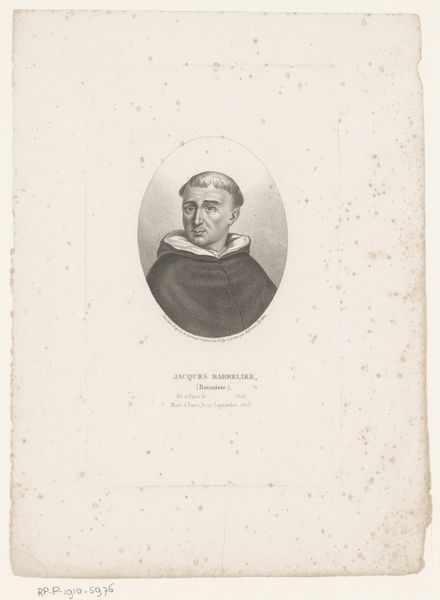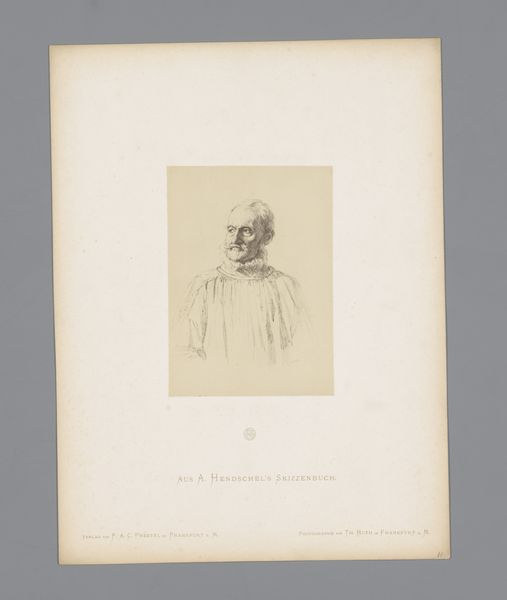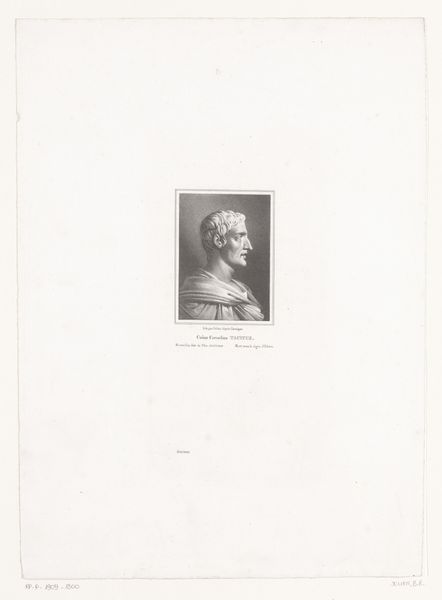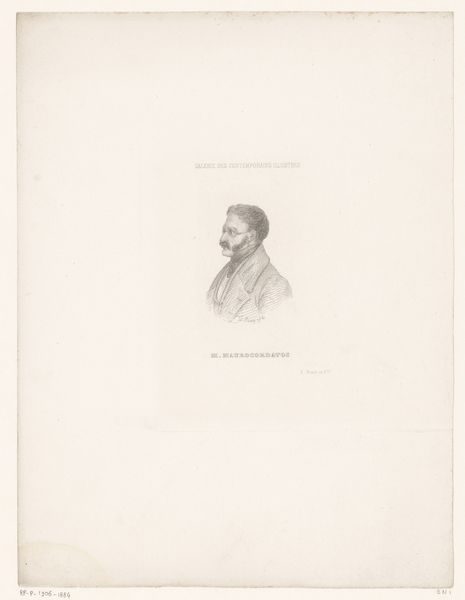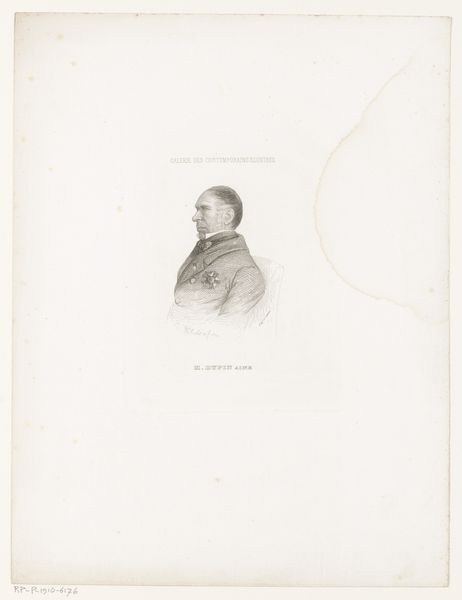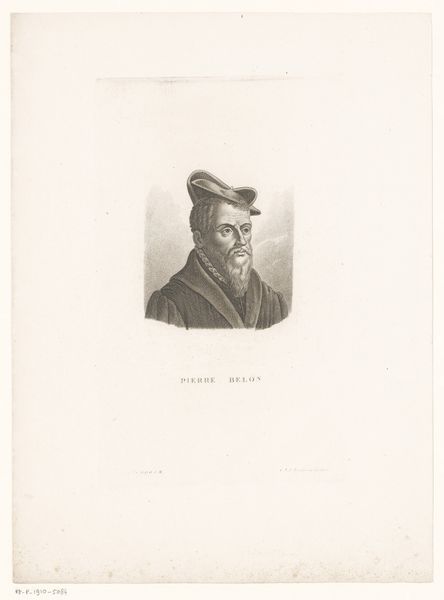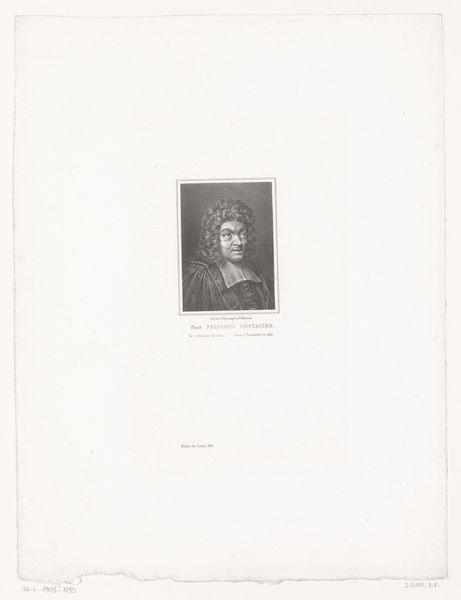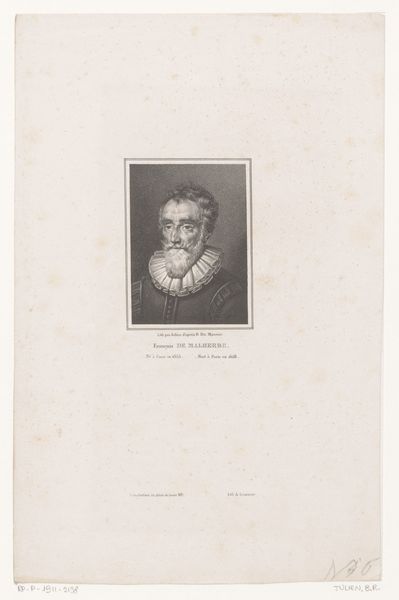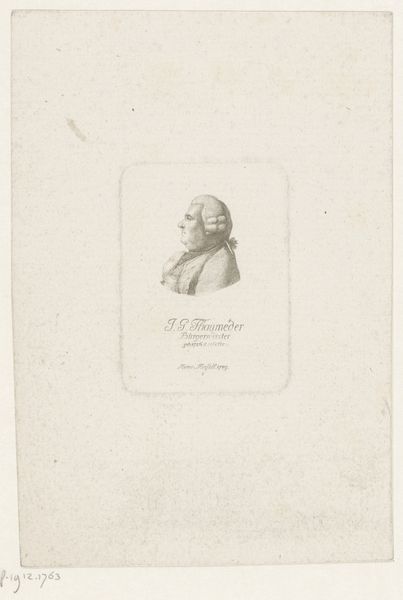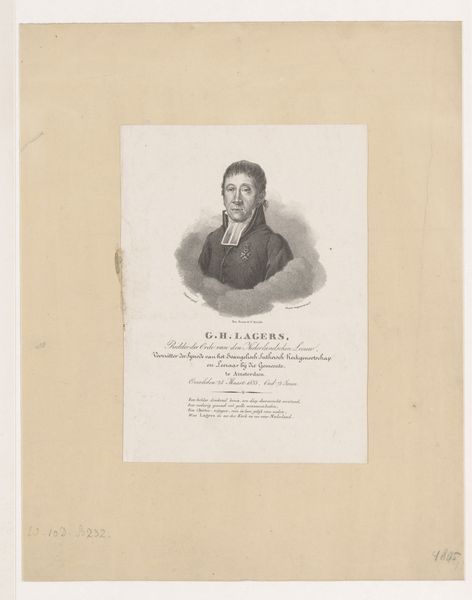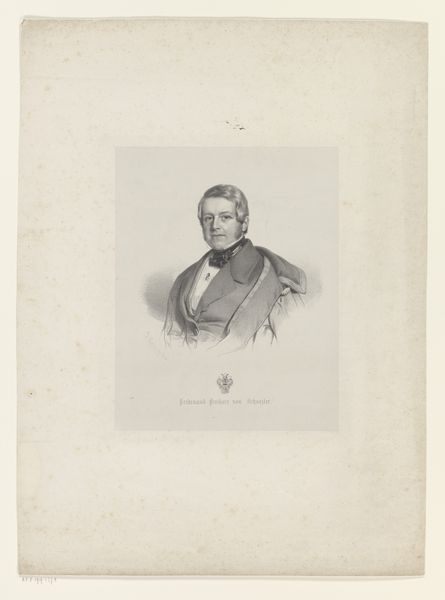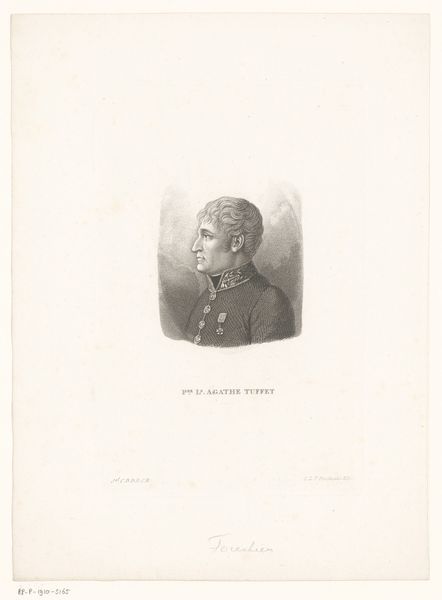
print, engraving
#
portrait
#
neoclacissism
# print
#
engraving
Dimensions: height 235 mm, width 138 mm
Copyright: Rijks Museum: Open Domain
Curator: Take a look at this engraving by Ambroise Tardieu, titled "Portret van Ludovico Ariosto", created sometime between 1820 and 1828. Editor: It has a solemn and classically inspired feel. The portrait itself is set within an oval, lending a formal air to the subject. The monochromatic palette adds to that sense of gravity. Curator: This is an engraving, a type of print. If you get close, you can observe the tiny lines carved into a metal plate and filled with ink that eventually make the portrait itself, a material intensive labor for disseminating images at the time. We're talking about a skilled artisan carefully etching away metal to capture Ariosto's likeness, and replicating that labor through printing multiple times. Editor: Exactly. The way light and shadow define his features within such a precise form; see how it almost gives a sense of movement while maintaining such controlled contours and form. I'm drawn to the deliberate contrast. And I find that laurel wreath and detailed collar interesting focal points. Curator: Indeed, that choice of the wreath immediately establishes the context and that connects him to the social milieu of intellectual production. The laurel symbolizes his achievement, so its representation makes us think of his cultural importance and status at that historical moment. Editor: And he's shown in profile, not quite engaging with the viewer, maintaining that distant heroic feel—very much fitting of the Neoclassical ideals it invokes through symmetry and clear depiction. But then, those soft, intricate details of the lace at his neck offer some textural delight and depth and serve as great contrast with his stark face. Curator: It's a visual record of status intertwined with material constraints and social access to printing techniques; it invites reflections on the very material basis for remembering figures and crafting legacies in 19th-century Europe. Editor: Absolutely, a testament to how close formal elements and materiality meet social context to forge aesthetic impressions and interpretations. Curator: A fitting final note indeed!
Comments
No comments
Be the first to comment and join the conversation on the ultimate creative platform.
